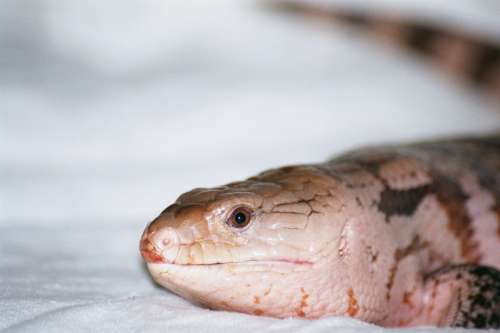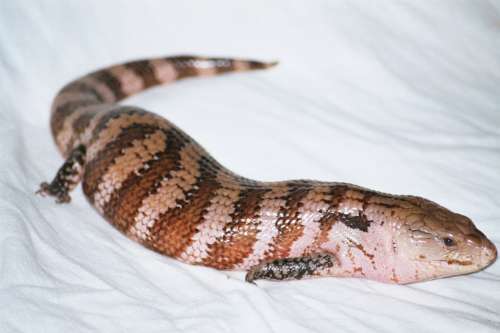 |
Blue-Tongued Skink
Tiliqua Scincoides
Kingdom: | Animalia | Phylum: | Chordata | Class: | Reptilia | Order: | Squamata | Family: | Scincidae | Genus: | Tiliqua | Species: | Scincoides |
|
Description
Blue-tongued Skinks are among the largest members of the skink family, reaching lengths up to 20 inches. They get their name from their bright blue tongue, which they use in defensive displays. They have a large, wide head, a stocky body, and short legs. Coloring can vary between individuals, but they are usually gray or brown on their backs, and lighter on their bellies. They have dark brown broad stripes across the body and tail. They are covered with smooth, overlapping scales that contain small plates of bone. Males tend to have proportionately larger heads and stockier bodies than females, while females grow slightly larger.
Click
Here to See Blue-Tongued Skink Pictures
Average Statistics
Length | Up to 24 Inches |  | Geographic Range | Eastern Australia |
DietVegetation, insects, carrion, and snails. OffspringUp to 25 young can be born after developing in the mothers placenta for 150 days. Young disperse from the parents days after birth. SoundsWhen threatened, blue-tongues can make a loud hissing noise. Relationship with HumansOne of the most common reptiles in Australia. |

